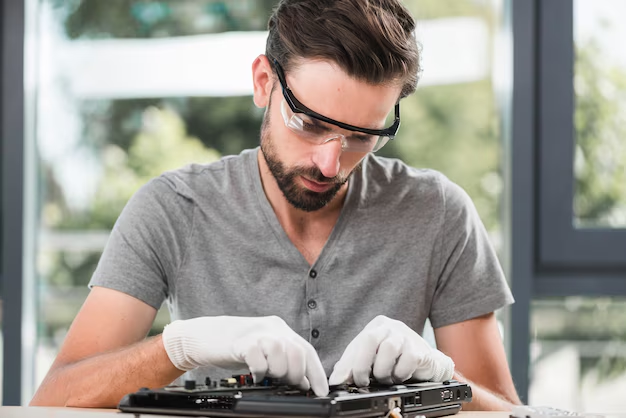Effortless Control: Mastering How to Turn Off Your KitchenAid Refrigerator
Owning a KitchenAid refrigerator brings a touch of sophistication and modern convenience to your kitchen. These appliances are famous for their reliability and advanced features, but like all machines, they sometimes require you to power them down for maintenance, cleaning, or troubleshooting. Knowing exactly how to safely and effectively turn off your KitchenAid refrigerator is crucial for any homeowner. This comprehensive guide dives into all aspects of deactivating your fridge, ensuring you feel informed and confident in handling your appliance.
Why Turn Off Your KitchenAid Refrigerator?
Routine Maintenance
Turning off your refrigerator is essential for performing routine maintenance. For example, cleaning your fridge regularly helps prevent bad odors, improves efficiency, and extends the appliance's life.
Troubleshooting Issues
Sometimes, problems like electrical glitches or strange noises can be resolved by simply resetting your refrigerator. Power cycling can often restore normal functionality, saving you the need for professional repair.
Energy Savings and Vacations
When leaving for extended periods, such as vacations, you might prefer turning off your refrigerator to save on energy costs. Properly shutting down your fridge can contribute to lower utility bills without harming the appliance.
Steps to Turn Off Your KitchenAid Refrigerator
Locate the Power Button or Switch
Most KitchenAid refrigerators have a simple on/off switch, usually found inside the appliance. Look above the top shelf or near the temperature control panel.
Adjust the Temperature Controls
Turn Controls to "Off": If your model lacks an on/off switch, turn the refrigerator and freezer temperature controls to their "Off" or "0" position.
Unplug the Unit: For models without electronic controls, you may need to unplug the appliance directly from the power source.
Use the Circuit Breaker: If neither option works, you might need to turn off the circuit breaker supplying power to the fridge.
Additional Powering Off Techniques
Smart Fridge Options
Many KitchenAid models are equipped with smart features, allowing for remote power adjustments via smartphone apps. This option provides convenient controls if accessible.
Managing Ice Makers and Water Lines
Turning off the water supply ensures no blockages or issues when powering down. Always remember to:
- Switch off the ice maker.
- Turn off the water input valve if linked to your unit.
Practical Tips for Safe Deactivation
Protecting Food Items
- Transfer perishables to a cooler with ice packs if you're shutting the fridge off for a significant period.
- Non-perishable goods can remain inside, but consider checking expiration dates.
Cleaning and Maintenance
Defrost the Freezer: If ice buildup is significant, defrost the freezer as part of turning off the unit to maintain efficiency.
Wipe Down Surfaces: Clean interior surfaces with mild soap and water to prevent mold and bacteria growth during shutdown.
Safety Precautions
- Ventilation is Key: Leave the refrigerator and freezer doors open slightly when turned off to prevent odors.
- Inspect Electrical Connections: Ensure plugs and cables are in good condition before reactivating the appliance.
Challenges and Solutions
Refrigerator Doesn't Restart
If your fridge fails to restart, check the following:
- Ensure the power source or circuit breaker is functioning.
- Consider contacting professional service if unresolved.
LED and Electronic Panel
Some modern units feature electronic panels that require resetting procedures after power cycles. Follow the user manual specific to your model.
Turning Off Your Refrigerator: Simplified Steps
👉 Before You Start:
- Check the user guide for model-specific instructions.
- Have cleaning materials ready if necessary.
👉 Shutting Off Process:
- Locate & Press the power button or switch.
- Adjust temperature controls to "Off."
- Unplug the refrigerator if needed.
- Consider circuit breakers for hard-to-reach plugs.
👉 After Power Off:
- Clean shelves and surfaces.
- Keep doors ajar for ventilation.
- Secure food in coolers if needed.
Conclusion: Mastering Appliance Control
Understanding how to turn off your KitchenAid refrigerator offers several advantages, ranging from effective maintenance to efficient troubleshooting. Equipped with this knowledge, you can handle upcoming refrigerator-related challenges confidently. Taking thoughtful steps not only prolongs the life of your appliance but also ensures optimal performance throughout each use. Remember, familiarity with your machine translates to a more seamless and hassle-free kitchen experience. Happy managing!
By following this comprehensive guide, you're equipped to effectively manage your appliance with ease, transforming uncertainties into straightforward, manageable actions.
